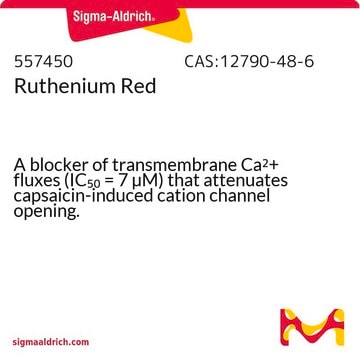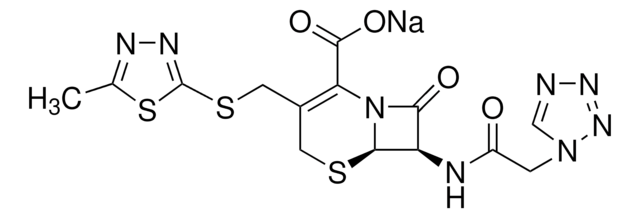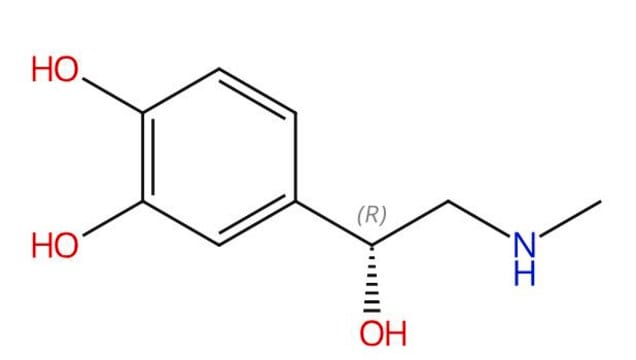E9156
Encainide hydrochloride
≥98% (HPLC), powder
Synonym(s):
(+/-)-4-Methoxy-N-[2-[2-(1-methyl-2-piperidinyl)ethyl]phenyl]benzamide hydrochloride, MJ-9067
About This Item
Recommended Products
Assay
≥98% (HPLC)
form
powder
solubility
H2O: >25 mg/mL
originator
Bristol-Myers Squibb
storage temp.
2-8°C
SMILES string
Cl.COc1ccc(cc1)C(=O)Nc2ccccc2CCC3CCCCN3C
InChI
1S/C22H28N2O2.ClH/c1-24-16-6-5-8-19(24)13-10-17-7-3-4-9-21(17)23-22(25)18-11-14-20(26-2)15-12-18;/h3-4,7,9,11-12,14-15,19H,5-6,8,10,13,16H2,1-2H3,(H,23,25);1H
InChI key
OJIIZIWOLTYOBS-UHFFFAOYSA-N
Gene Information
human ... SCN10A(6336) , SCN11A(11280) , SCN1A(6323) , SCN2A(6326) , SCN3A(6328) , SCN4A(6329) , SCN5A(6331) , SCN7A(6332) , SCN8A(6334) , SCN9A(6335)
Biochem/physiol Actions
Features and Benefits
Signal Word
Danger
Hazard Statements
Precautionary Statements
Hazard Classifications
Acute Tox. 3 Oral - Eye Irrit. 2 - Skin Irrit. 2 - STOT SE 3
Target Organs
Respiratory system
Storage Class Code
6.1C - Combustible acute toxic Cat.3 / toxic compounds or compounds which causing chronic effects
WGK
WGK 3
Flash Point(F)
Not applicable
Flash Point(C)
Not applicable
Personal Protective Equipment
Regulatory Listings
Regulatory Listings are mainly provided for chemical products. Only limited information can be provided here for non-chemical products. No entry means none of the components are listed. It is the user’s obligation to ensure the safe and legal use of the product.
JAN Code
E9156-10MG:
E9156-50MG:
E9156-VAR:
E9156-BULK:
Certificates of Analysis (COA)
Search for Certificates of Analysis (COA) by entering the products Lot/Batch Number. Lot and Batch Numbers can be found on a product’s label following the words ‘Lot’ or ‘Batch’.
Already Own This Product?
Find documentation for the products that you have recently purchased in the Document Library.
Articles
Voltage-gated sodium channels are present in most excitable cell membranes and play an important role in generating action potentials.
Our team of scientists has experience in all areas of research including Life Science, Material Science, Chemical Synthesis, Chromatography, Analytical and many others.
Contact Technical Service









